
News
Harvard Grad Union Agrees To Bargain Without Ground Rules

News
Harvard Chabad Petitions to Change City Zoning Laws

News
Kestenbaum Files Opposition to Harvard’s Request for Documents

News
Harvard Agrees to a 1-Year $6 Million PILOT Agreement With the City of Cambridge

News
HUA Election Will Feature No Referenda or Survey Questions
Deconstructing Harvard-Yale: What Wins the Game?

In what will be the most electric and heated atmosphere of the Ivy League football season, the 140th playing of the Harvard-Yale game deserves a magnifying glass to untangle the recent history of the storied rivalry. When thinking about The Game this weekend, many of us are pondering the same question: What does it actually take to win?
Offensive and Defensive Production
First, let’s take a look at some simple offensive and defensive production statistics.

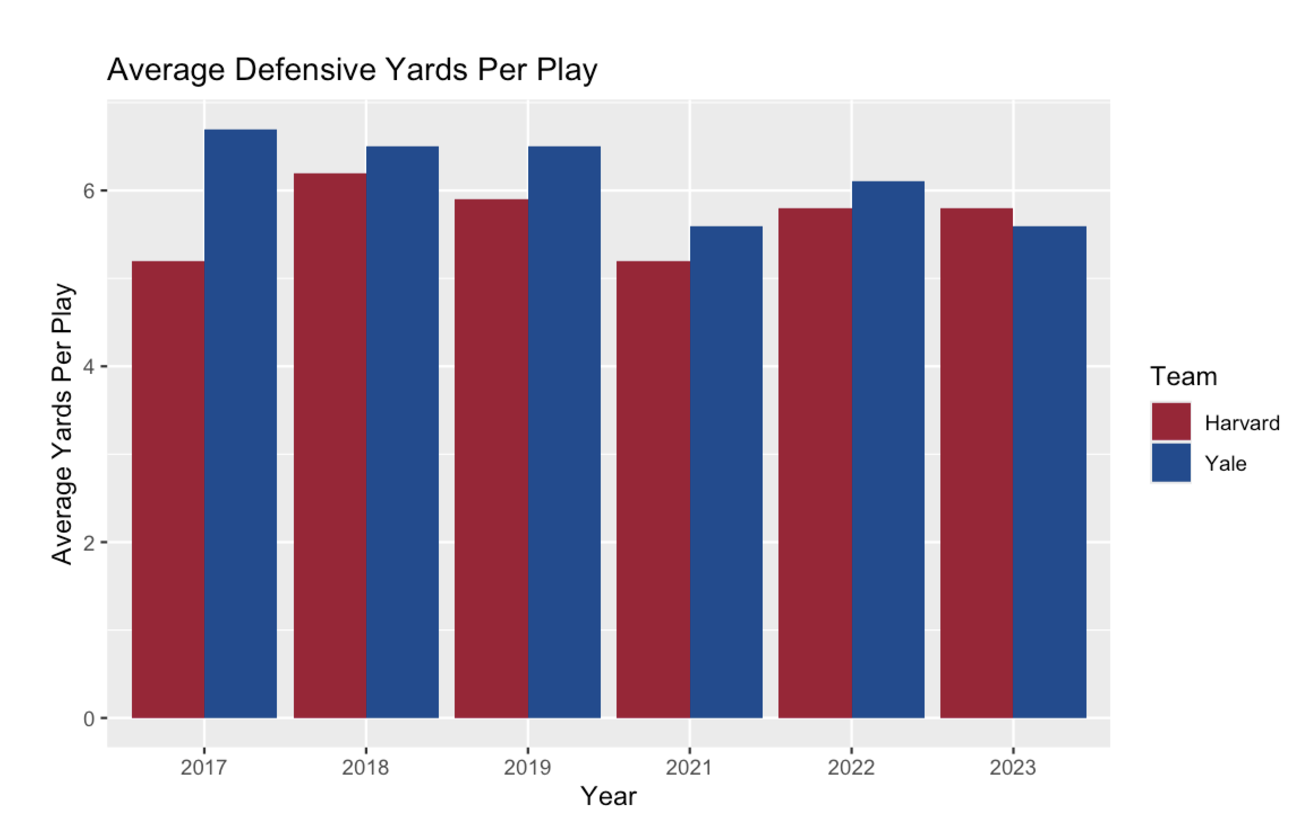
Despite entering the 2017 game with a more explosive offense and oppressive defense, the Crimson fell to the Elis by 21 points in a 24-3 blowout. In 2018 and 2021, when Harvard prevailed, the Crimson boasted a stronger defensive efficiency, despite having a weaker per-play offensive production.
In 2019, 2022, and 2023, Yale’s stronger offense, powered by strong quarterback play, willed the Bulldogs to victory in one-possession games that went down to the wire.
Surprisingly enough, in the scatterplot below, four of the last six victors (Yale 2017, Harvard 2021, Yale 2022, Yale 2023) are grouped in the top left cluster, demonstrating that overall production throughout the season, as opposed to per-play production, might not be indicative of performance during the game.
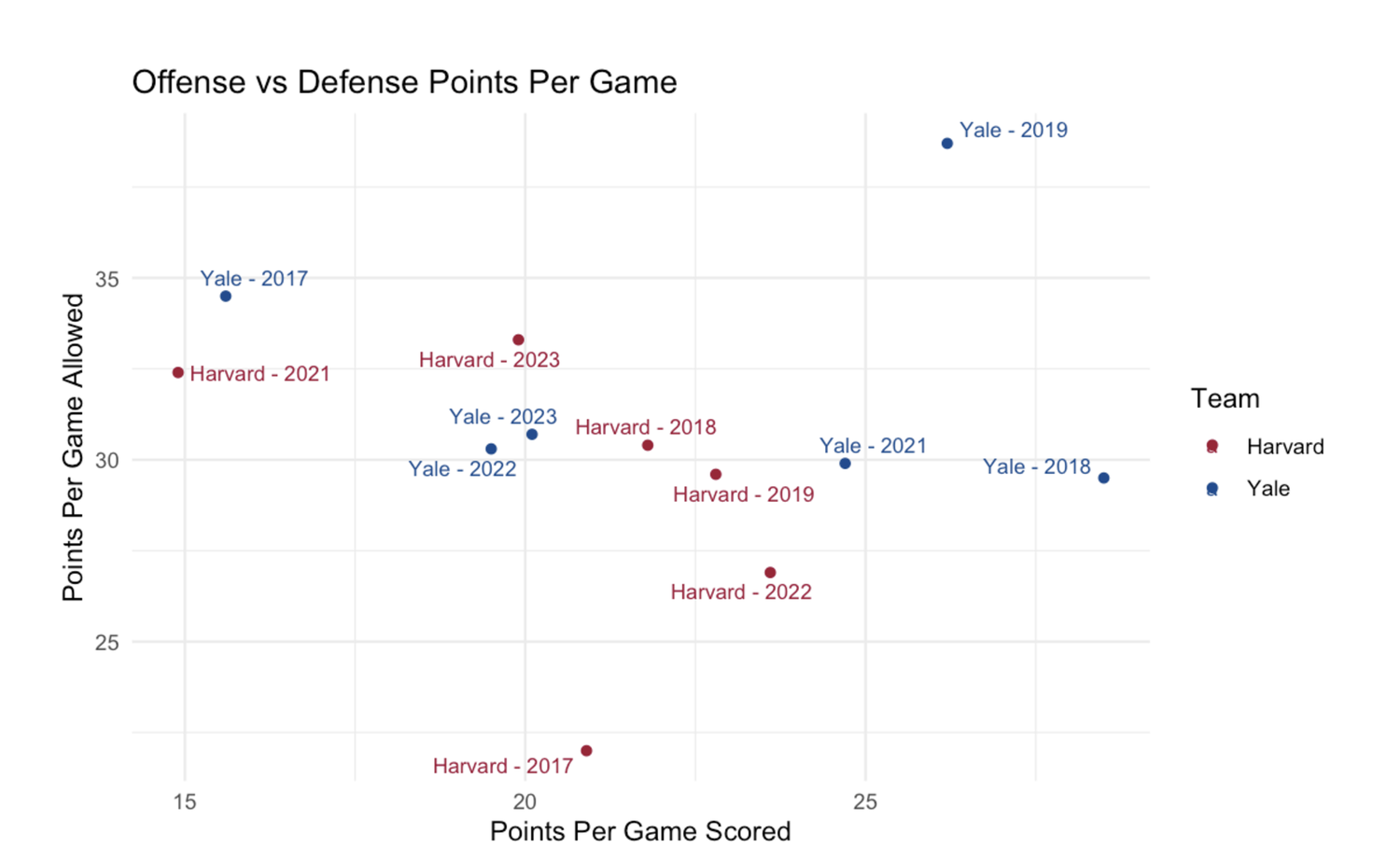
In 2024, the Bulldogs and the Crimson are both averaging nearly six yards per offensive play. On the defensive side of the ball, Harvard is allowing just under five yards per play compared to nearly six for Yale.
With the Crimson seemingly poised to capitalize on a weaker Bulldogs defense, the matchup of the Elis offense against Harvard’s defense could set the tone for the afternoon.
The main takeaway? Defensive production is key for the Crimson, while offensive efficiency matters more for the Bulldogs. The game will likely be decided by whichever one of these units takes over when both are on the field.
The Down That Matters
Looking deeper into specific downs, it’s clear that since 2017 there has been a moderately strong positive linear association between converting third downs and winning the football game across the Ivy League.
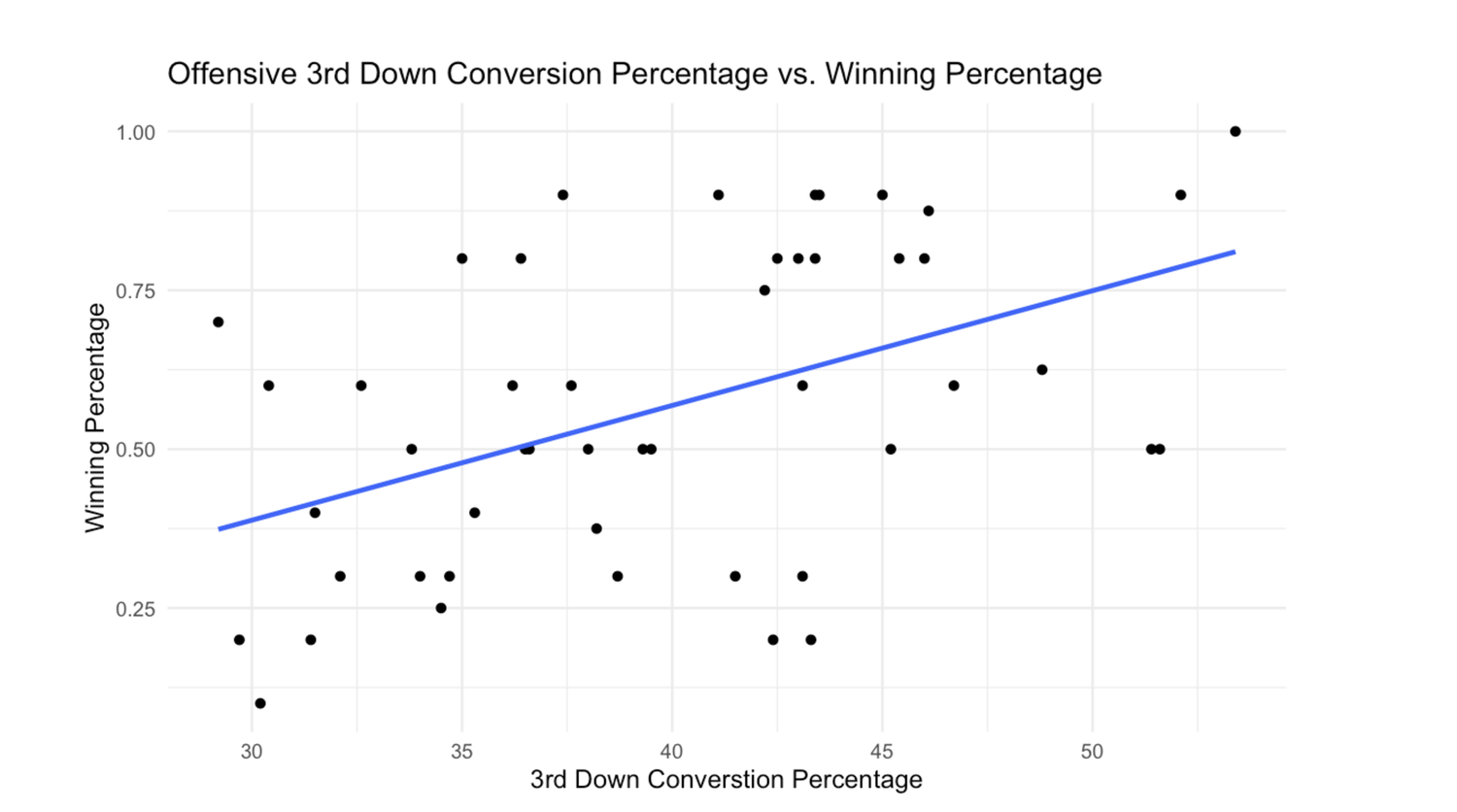
On the defensive side of the ball, similarly, both teams’ winning percentage falls rapidly as its opponents convert a higher percentage of their third downs. The line of best fit indicates that even a 10 percent increase in opponent conversion rate decreases winning percentage by 10 points.
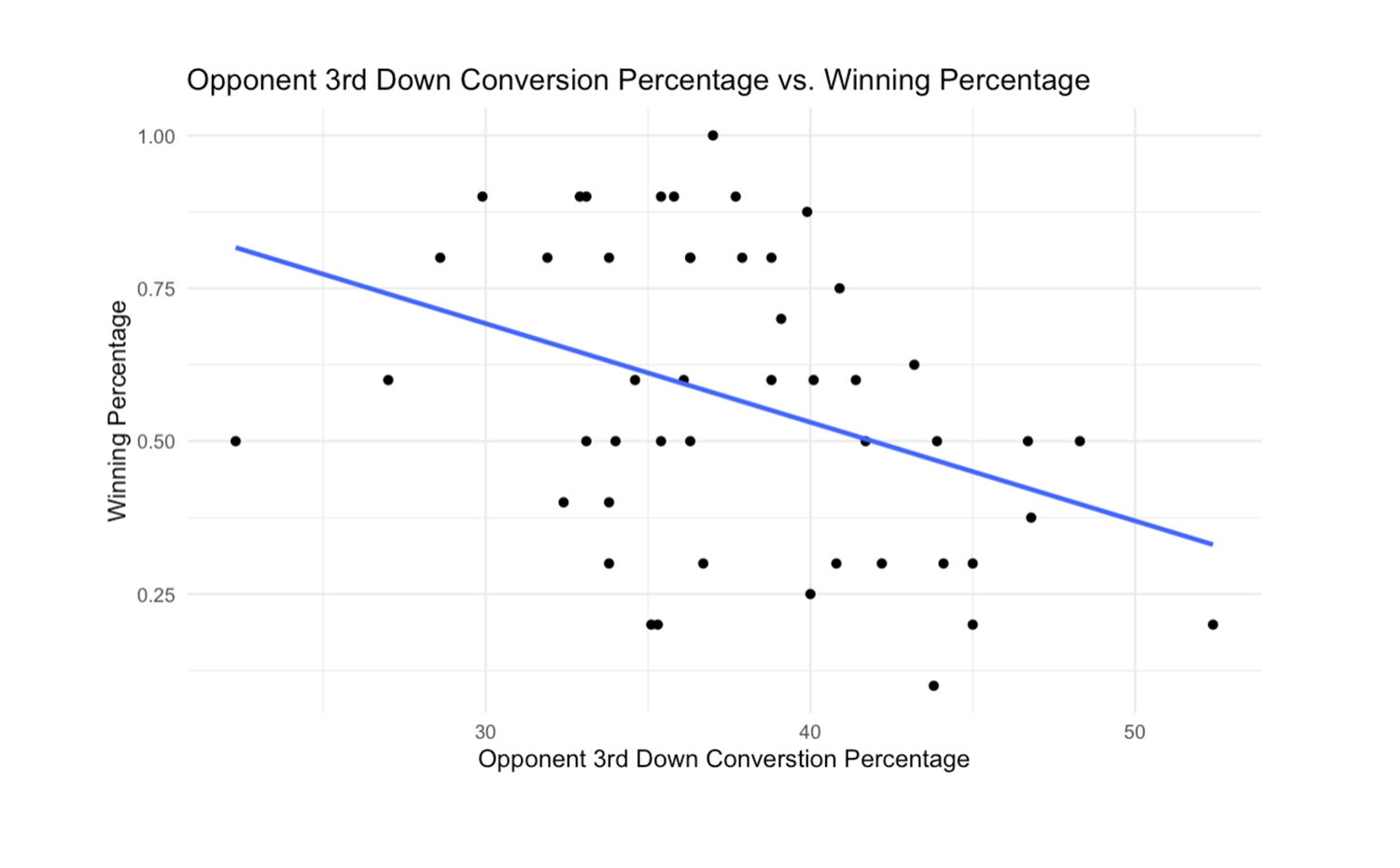
Do these trends hold for Harvard and Yale specifically? Looking at the scatterplot below, Yale’s offense has historically delivered under high-pressure third down situations, owning a higher conversion rate every year since 2017.
However, it appears that Harvard’s defensive third down play significantly impacts the outcome of The Game. The Crimson has won both times it has held its opponents to a conversion rate of under 30 percentage points throughout the season. However, when that opponent conversion percentage creeps above this threshold, Harvard has struggled significantly more against Yale, dropping each of those contests in 2017, 2019, 2022, and 2023, as shown below.
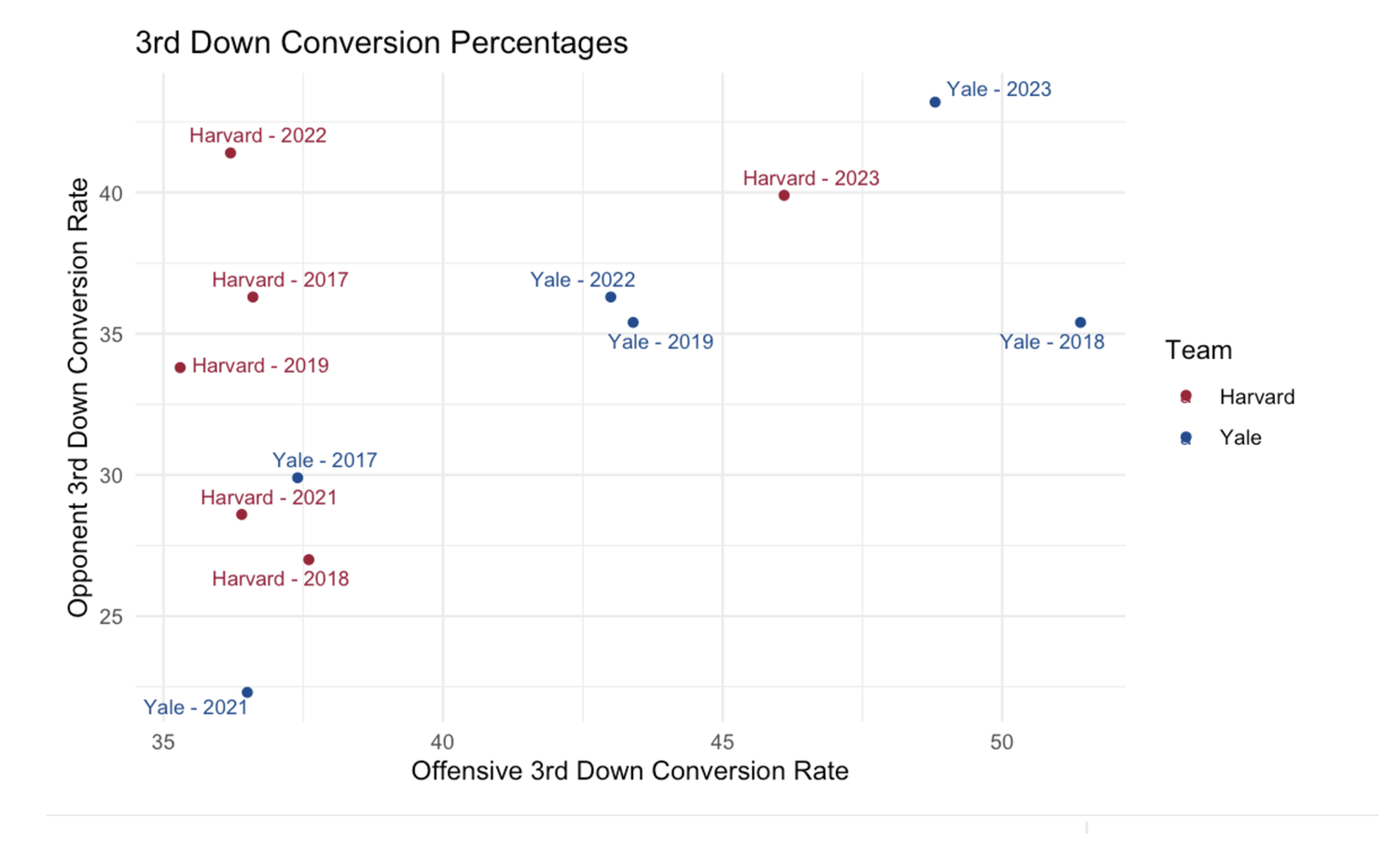
In the 2024 season, Harvard’s defense has allowed a 35.4 percent conversion rate, while the Elis have converted 45.8 percent of their third downs. As the Crimson’s defense has struggled to get to the quarterback throughout the year, Yale quarterback Grant Jordan’s mobility will be key in extending drives for the Bulldogs.
Thus, Harvard’s third down approach could very well change the trajectory of the game. Yet again, third downs when Harvard’s defense and Yale’s offense are on the field will be a big determinant of the flow of the game. If Jordan can move the sticks for the Bulldogs in the big moments, it could be the difference in the game.
Every playing of The Game is unique, with packed student sections and the accompanying adrenaline raising the level of play on both sides. However, common trends in crucial areas — per-play efficiency and third down conversions — have repeatedly indicated which team will come out on top, and this year should be no different.
—Staff writer Praveen Kumar can be reached at praveen.kumar@thecrimson.com.
Want to keep up with breaking news? Subscribe to our email newsletter.
From Our Advertisers

Over 300+ courses at prestigious colleges and universities in the US and UK are at your disposal.

With innovative financial tools combined with financial education, Collegiate empowers students to take control of their finances and build confidence in their money management skills.

Serve as a proctor for Harvard Summer School (HSS) students, either in the Secondary School Program (SSP), General Program (GP), or Pre-College Program.

With an increasingly competitive Law School admissions process, it's important to understand what makes an applicant stand out.

Welcome to your one-stop gifting destination for men and women—it's like your neighborhood holiday shop, but way cooler.

Admit Expert is a premium MBA admissions consulting company, helping candidates secure admission to top B-schools across the globe with significant scholarships.
